In open ground and in greenhouses, growing cucumbers on trellises can save space, facilitate the care of vegetables and get a rich harvest. However, the method provides for the preliminary implementation of organizational and economic activities, without which vertical cultivation is indispensable. The trellis method of growing cucumber plants has its own characteristics of planting and care, harvesting.
Content
What a method
With the traditional (horizontal) method of growing, the lashes grow strongly on the ground, which is why the grower is forced to step on shoots during harvesting. Since for the extension of fruiting we eat cucumbers every 2-3 days, trampled parts of plants appear on the beds, which could form greenery. Thanks to the twisted shoots and antennae, cucumbers develop well in vertical structures - trellises. This method of cultivation solves the problem and allows you to avoid injury to the lashes - to increase productivity.
During the growing season, the cucumber lash “scrambles” along the grid, evenly distributed over the entire area and providing free access to its shoots. Schematically, the trellis method looks like this:
- Along the bed, metal pipes or wooden bars are installed, driving them to a depth of half a meter for stability. Height depends on the variety, but does not exceed 2 m.
- A net is pulled between the pipes, through the upper edge of which a wire is passed for fixing.
- With several beds, the row spacing is maintained at 1.5 m.
- Cucumbers are allowed on the trellis, tied with twine or twine.
Pros and cons of the method
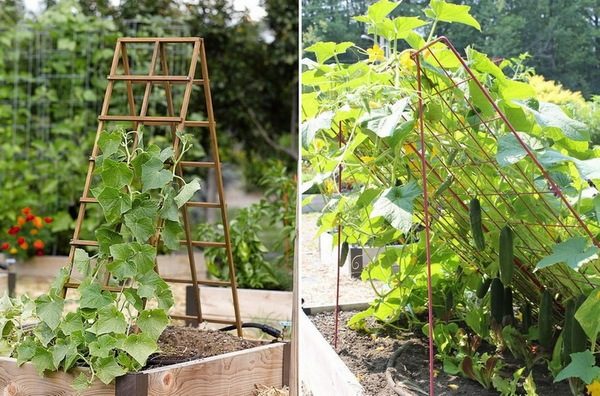
If you grow cucumbers in open ground on a trellis, you can in practice be convinced of the advantages of this method that experienced vegetable growers emit. Although he has one drawback.
Table. Pros and cons of vertical cultivation
| Benefits | disadvantages |
| Natural development of lashes | The complexity of the process of erecting trellis with your hands for your cucumbers |
| Lack of contact of leaves with soil | |
| Ease of care and harvest | |
| More effective pollination | |
| Uniform access of the sun to all fruits | |
| Airing bushes | |
| Decorative look of beds | |
| Space saving |
What varieties of cucumbers are grown on trellises
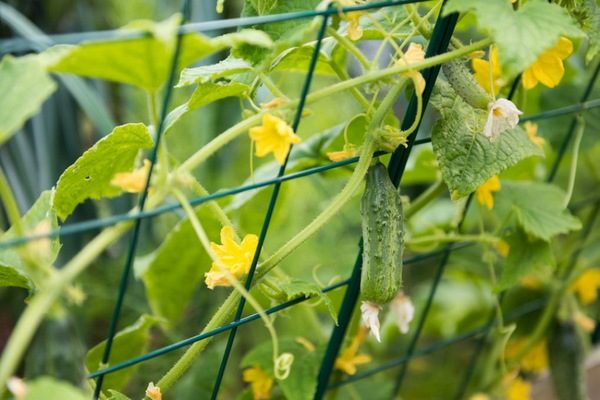 Since the culture grows in a vertical way in the natural environment, this method of cultivation in open ground is acceptable for almost all cucumbers. But some produce tremendous increases in yield as a result of trellis cultivation. Vegetable growers more often than others distinguish such representatives:
Since the culture grows in a vertical way in the natural environment, this method of cultivation in open ground is acceptable for almost all cucumbers. But some produce tremendous increases in yield as a result of trellis cultivation. Vegetable growers more often than others distinguish such representatives:
- "Focus F1" - a vigorous parthenocarpic hybrid with early ripening and medium branching, suitable for greenhouses;
- “Regal F1” - a bee pollinated cucumber with a short growing season and good adaptability to various climatic conditions, fruits of the gherkin type;
- Asterix F1 is a high-yielding, drought tolerant hybrid of medium maturity, the result of the work of the Dutch selection agricultural company.
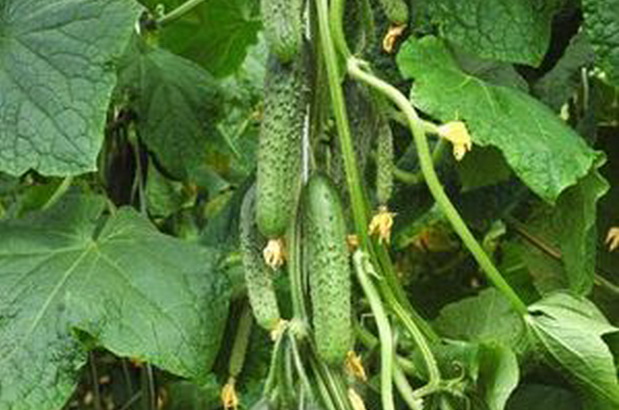 You may be interested in:
You may be interested in:Types of Trellis
The simplest is wooden, which is a frame in the form of the letters “A” (with a spacer bar in the middle), “L” (without a spacer), “T” or “P”. Since the supporting elements will have the main load, they must be high (which will allow them to drive deeper) and strong. Intermediate slats are installed every 2 m with long beds. This is done to strengthen the structure due to increasing weight as cucumbers grow.
The upper planes of the supporting rails are connected by crossbars. Nails are driven into the latter, which in the future will make it possible to fix the twine or twine that is used for garter trellis cucumbers. In addition, there are two more varieties that can be done independently by watching a video of the construction process and a photo of the final result:
- round - “tent” or “herringbone”;
- wall - the role of the supports is performed by a fence or a wall.
Outdoor cultivation conditions
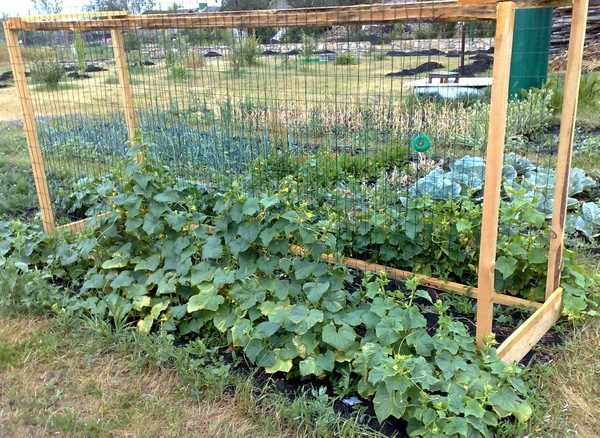
To get a rich harvest, they begin to prepare in advance for growing a vegetable crop. For cucumbers in the open ground, sunny areas with a slight shade in the midday heat are chosen (the last refinement applies only to the southern regions). Ground water in the territory should lie deep. Stagnant moisture in the roots reduces the immunity of plants and leads to the development of fungal diseases.
Predecessors
Plots on which cabbage, tomatoes, and radishes were previously cultivated are assigned for planting cucumbers. Peas will be an excellent precursor: legumes can concentrate nitrogen on the roots, raising the soil fertility index. It is acceptable to place cucumbers after early potatoes, radishes. Bad predecessors are pumpkin, zucchini and cucumbers themselves.
Soil preparation rules
Soil is prepared in the fall. In the spring they only “close” the moisture and set the trellis. The sequence of autumn preparations:
- 5-6 kg of manure, 30 g of superphosphate, 200 g of wood ash are distributed over the selected site per 1 m2 (if the soil is more acidic, the last agent is replaced with dolomite flour);
- Dig a shovel on a bayonet.
- With a rake the earth is leveled so that water does not accumulate on it in one place.
Presowing seed treatment
This preparatory stage is not always necessary. If the grower buys seeds from large producers, as a rule, they go pelleted - disinfected. They are covered with a special shell. If there is no such seed on the seed, or it is its own seeds, they are first soaked to sort out substandard (they will pop up). Germinating specimens are additionally treated with a potassium permanganate solution to destroy pathogenic organisms. Next, the seed is wrapped in wet gauze and left until it is pecked, systematically wetting the tissue.
Ways of planting cucumbers on a trellis, the formation of bushes
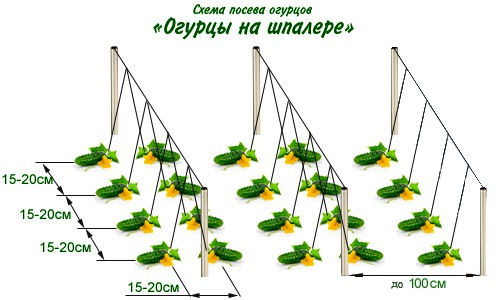
Vegetables are grown in two ways: seedlings and direct sowing of seeds in the ground. In the first case, peat pots are used to plant cucumber seedlings on the bed without injuring the root system. Planting seedlings in open ground should be after the establishment of stable warm weather with two real leaves (soil temperature at a depth of 10 cm - 12 ° C).
In areas with a mild climate, where spring comes earlier, the seeds are sown immediately in the ground. The signal to the beginning of sowing is the temperature indicator of the soil.The seeding depth is 3 cm. If there is still a threat of freezing frost, the cucumbers are covered with a film. Planting scheme for seedlings and seeds of cucumbers on a trellis, in cm:
- between plants in a row - 15–20;
- parallel supports - 80–100.
Garter
To tie up cucumber plants, use soft twine or twine, which will not allow injury to the lashes, but will withstand their weight. The first time the procedure is carried out after the formation of the third leaflet, when one end of the rope is fixed on a stand, the other on the top of the plant. Then every 4 days the twine is pulled up as the lash develops.
Pinch
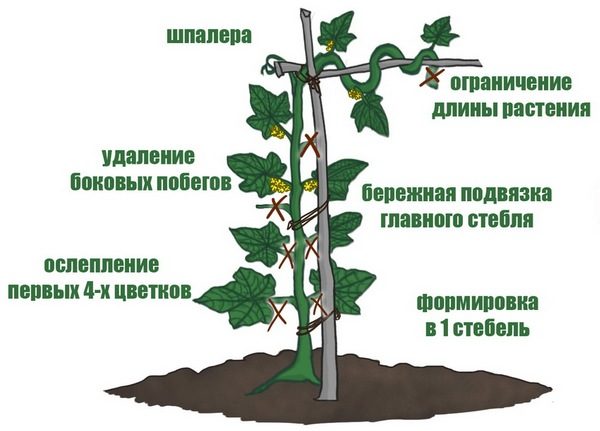
To get a strong plant that will give a plentiful harvest, it is necessary to form a lash at the cucumber constantly. Pinch lateral shoots every 10 days throughout the growing season:
- the first four lower leaf sinuses "blind";
- in the next three nodes, only the ovary is left;
- after the seventh sinus, pinch the lateral shoots after the second leaf;
- after the ninth knot, the processes and ovary do not touch;
- when the lash reaches the top, it is thrown several times over the crossbar and pinched.
Features of the care of cucumbers
The planted culture for full growth needs moisture, nutrition, air, freely flowing to the roots. To ensure all this, the vegetable should be systematically taken care of when moisturizing, fertilizing with appropriate fertilizers, cultivating, as well as preventive or protective treatment against diseases and pests.
Watering
Cucumbers are a moisture-loving culture with a superficial root system. The latter cannot reach the reserves in the meter layer. So that the plants do not suffer from drought, they are watered weekly with warm water under the root, avoiding sprouts. During the fruiting period, the hydration rate should be doubled correctly. The optimal method of irrigation is drip.
Soil treatment
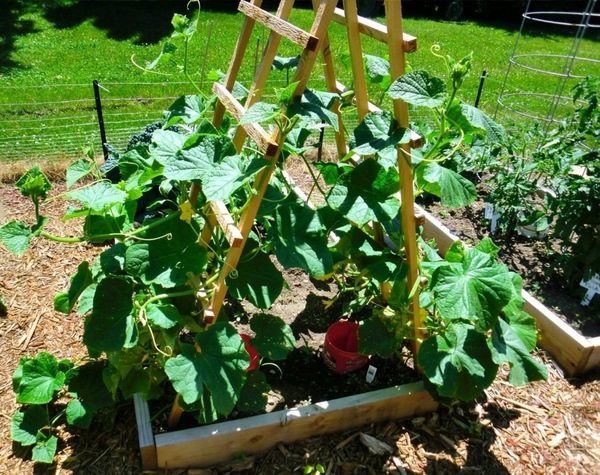
The moistened soil is loosened, making it to a depth of no more than 3 cm with a chopper. Too deep penetration can lead to damage to the root system and even death of plants. Weeding is combined with cultivations to save time and not disturb the roots once again. Experienced growers truncated circles mulch, retaining moisture and friability for a longer period.
Top dressing
Cucumbers respond well to a balanced diet. After the emergence of seedlings or transplanting vegetables feed a solution of urea or bird droppings in a ratio of 1: 10. Phosphorus-potassium complexes (wood ash, superphosphate in combination with potassium sulfate) are introduced into the flowering phase. After the formation of the ovary, as well as in the middle of the fruiting, top dressing is repeated in order to extend the period of return of greenhouses and improve their quality.
Protection against diseases and pests
Different varieties have different immunity. Most common diseases in culture powdery mildew, peronosporosis and gray rot are. In order to prevent their development, it is better to treat plantings as a preventive measure before flowering with copper-containing fungicide. Among pests, gourd aphids are isolated. Insecticides can cope with it without difficulty. If the insect populated the planting when the use of pesticides is prohibited, use an infusion of garlic, onion husks, and tobacco.
Harvesting and work at the end of the season
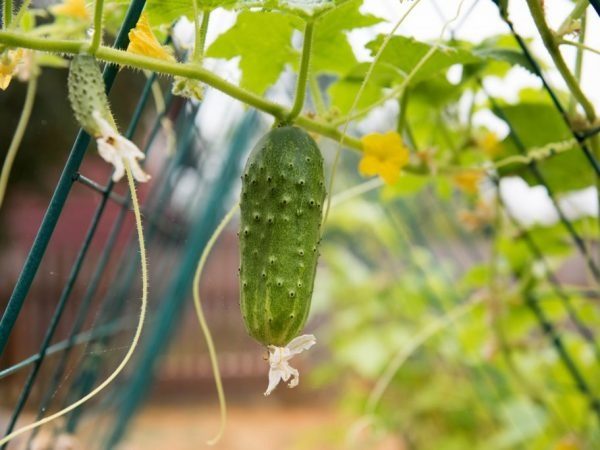
The grown fruits are removed every 2 days, and in some varieties the fruiting phase is even more intense. The procedure is carried out in the morning or evening hours. That cucumbers continued to be knitted, it is impossible to be late with cleaning. At this time, not only healthy Zelentsy are removed, but also sick. This will preserve the plant's vital reserves, which it will not spend on damaged cucumbers.Removing the fruits from the trellis, hold the lashes with your hands so as not to damage the shoots. Otherwise, fruit production may stop.
When the culture ceases to bear fruit, the entire green mass, including the antennae, is removed from the trellis. All twine and garters are removed, and then washed with a concentrated solution of laundry soap and dried well under sunlight. This technique makes it possible to prepare the trellis for the next season. The remaining plant residues are burnt, the site is dug up, weed roots are removed and fertilized with compost or other fertilizers, taking into account crop rotation - depending on the crop planned for cultivation in the next season.
Possible mistakes when growing
The difficulties of cultivating cucumbers on trellises are not only encountered by beginners. Sometimes experienced vegetable growers who previously grown vegetables in a horizontal way find themselves in a similar situation. Very often, cucumbers are placed in areas where there is a slight wind. As a result, the plant does not bear fruit, since during vertical cultivation it is very strong and weakens the culture.Due to the lack of free space and improper crop rotation, cucumbers are placed in one place for several years in a row (or after other gourds). Planting affects harmful organisms, the development of which, without regular treatments, leads to a significant shortage of crops. And in the case of constant protective measures, the cost of production increases.
Vertical cultivation of cucumbers helps to increase productivity without occupying a large area. The latter plays an important role in the choice of cultivation method in small household plots or cottages.

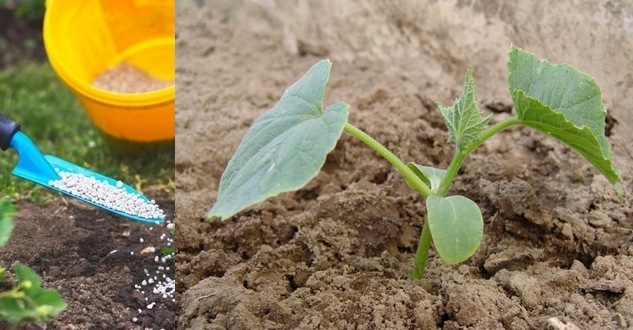
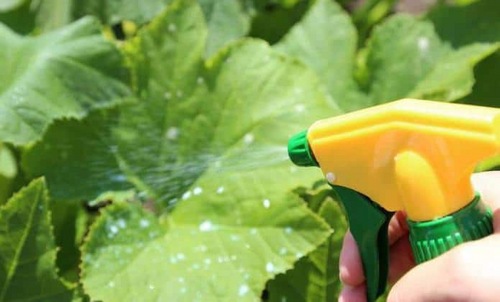
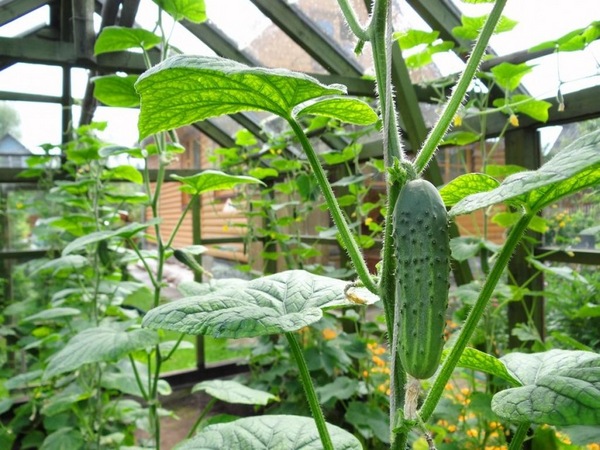
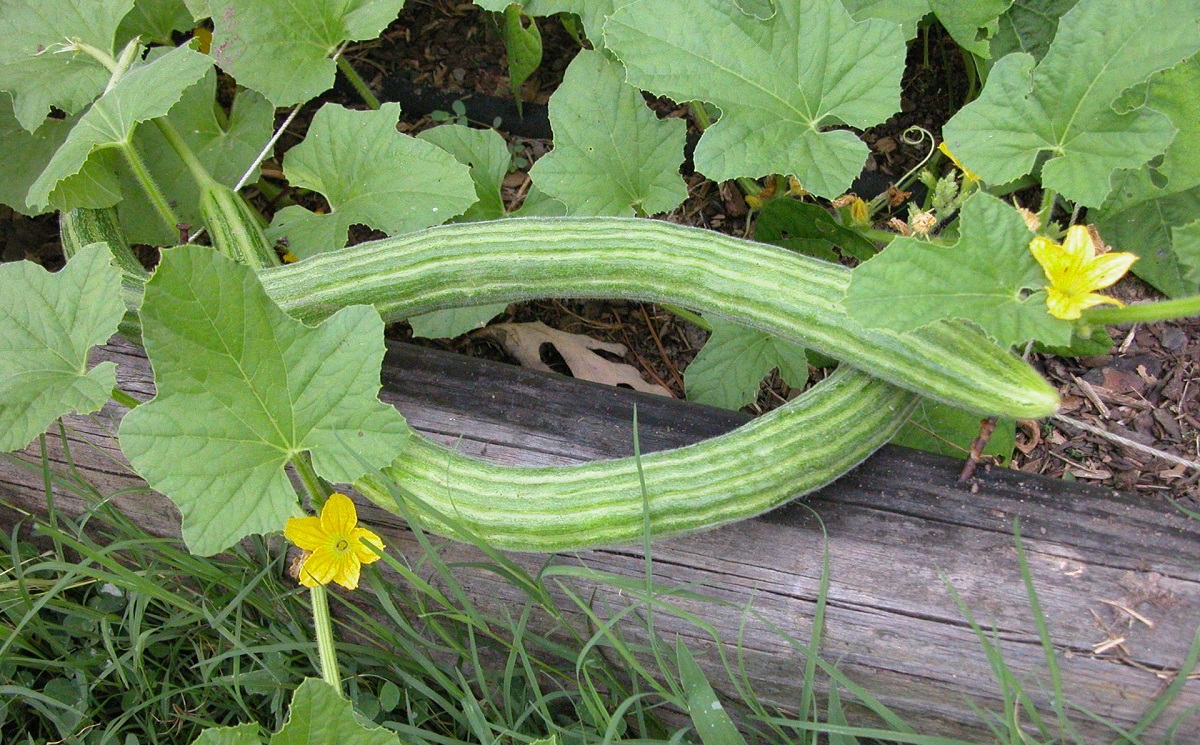 Armenian cucumber with melon flavor: description and characteristics, reviews
Armenian cucumber with melon flavor: description and characteristics, reviews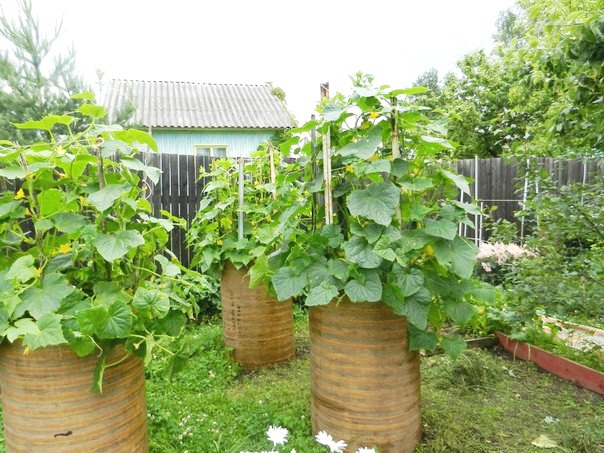 Do-it-yourself vertical beds for cucumbers: schemes, photos
Do-it-yourself vertical beds for cucumbers: schemes, photos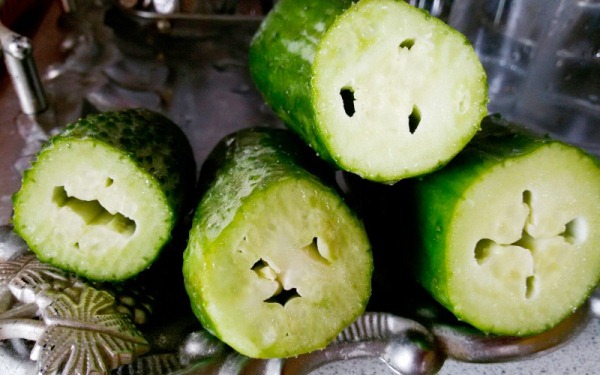 Hollow cucumbers: reasons for the appearance of hollow, what to do
Hollow cucumbers: reasons for the appearance of hollow, what to do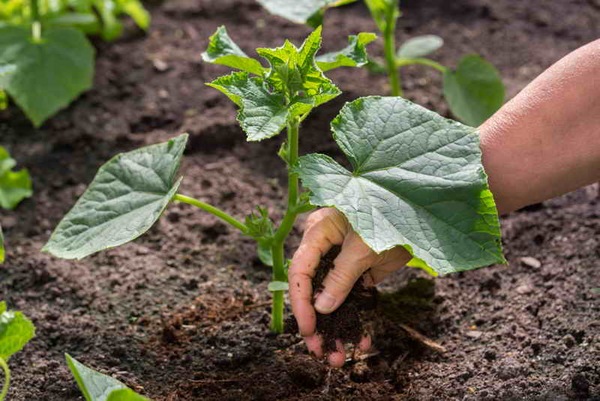 Which manure is best for cucumbers: application, how to breed
Which manure is best for cucumbers: application, how to breed